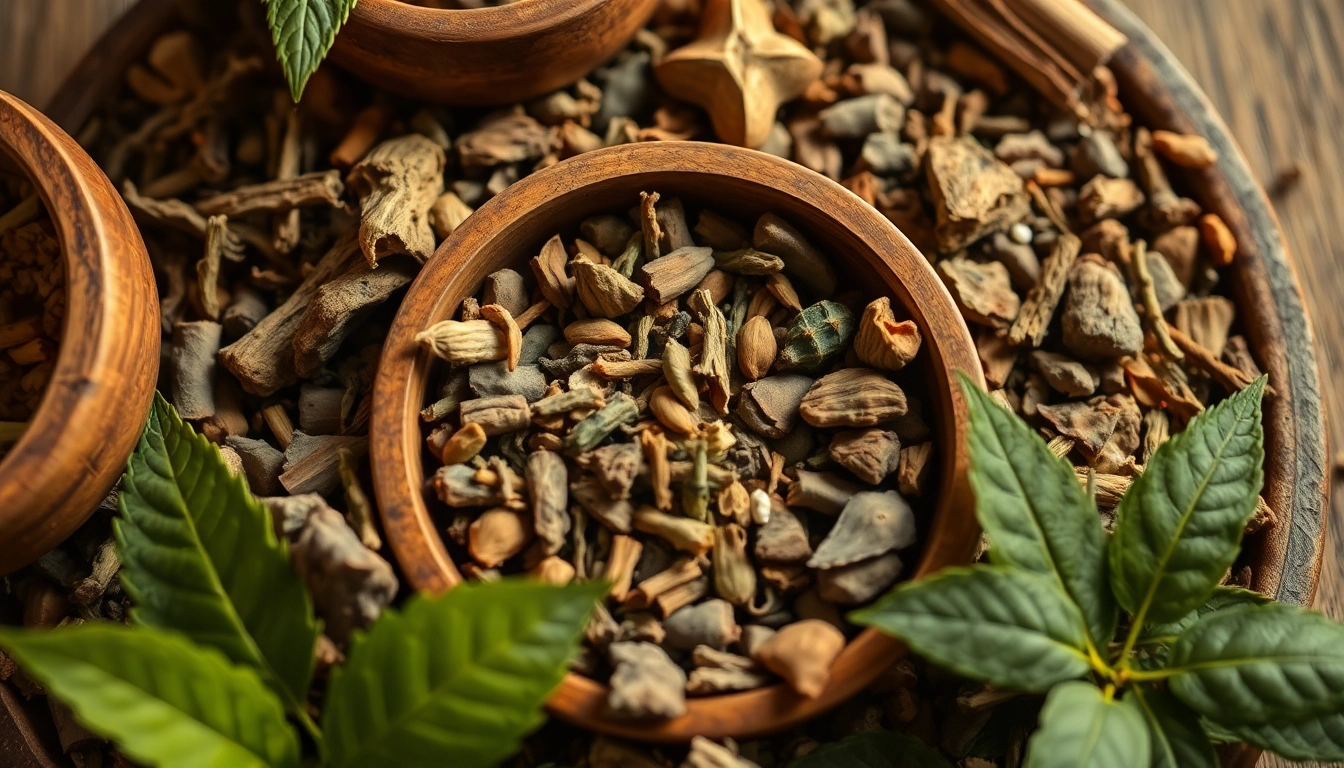Understanding Alternative Smoking Blends
Alternative smoking blends are becoming increasingly popular among individuals looking for natural alternatives to traditional tobacco products. This shift in preference often arises from a desire to avoid the harmful effects associated with many conventional smoking methods. Within this guide, we will delve into the various facets of alternative smoking blends to equip you with everything you need to know. With countless combinations available, it can be a fulfilling experience to create a blend that perfectly aligns with your personal taste and desired effects. Whether you’re seeking relaxation, an energy boost, or simply a unique flavor profile, there’s an alternative blend for you. For more information on creating your ideal mix, check out this Alternative Smoking Blend resource.
What Are Alternative Smoking Blends?
Alternative smoking blends refer to mixtures of herbs, flowers, resins, and other natural substances that are smoked instead of traditional tobacco. These blends offer a variety of flavors, aromas, and potential effects, appealing to those seeking a more natural smoking experience. Unlike tobacco, which contains nicotine and numerous harmful chemicals, many alternative ingredients are considered safer and provide diverse benefits.
Some commonly used plants in these blends include chamomile, lavender, and eucalyptus, each contributing its unique characteristics. The inclusion of various ingredients allows for customization based on personal preferences concerning flavor and effects, making the process of creating an alternative blend both therapeutic and enjoyable.
Benefits of Smoking Alternatives
Shifting to alternative smoking blends can offer several benefits, including:
- Reduced Health Risks: By utilizing natural herbs, the absence of tobacco means significantly fewer harmful substances are inhaled.
- Variety of Effects: Different herbs can elicit various effects—some may promote relaxation, while others may invigorate or focus the mind, providing versatility in your smoking experience.
- Custom Flavor Profiles: The ability to mix and match ingredients enables smokers to create complex flavor profiles unique to their palate.
- Cultural and Natural Connection: Many herbs have been used in traditional practices for centuries. Creating alternative blends can enhance your appreciation for these age-old customs and their connection to nature.
How to Choose the Right Ingredients
Selecting the appropriate components for your alternative smoking blend is crucial to achieving the desired taste and effects. Here are some guidelines to help you choose wisely:
- Identify Your Goal: Understand what effect or experience you seek from smoking. For relaxation, lavender or chamomile might be ideal; for a more energizing effect, consider peppermint or ginger.
- Consider Flavor Pairings: Think about how different tastes interact. For example, combining minty herbs with sweet ones can create a balanced flavor profile.
- Research Each Ingredient: Gain knowledge about the ingredients’ chemical makeup and effects. For instance, while some herbs are soothing, others may be stimulating or even mildly psychoactive.
Popular Ingredients for Alternative Smoking Blends
Herbs: Flavors and Effects
Herbs form the backbone of most alternative smoking blends. Their flavors and effects vary widely depending on their botanical composition:
- Chamomile: Known for its calming effects, chamomile is often used to promote relaxation and reduce anxiety.
- Lavender: This fragrant herb not only offers a pleasant aroma but is also reputed for its anti-anxiety properties.
- Rosemary: An invigorating herb, rosemary can enhance mental clarity and focus, making it a good choice for daytime use.
- Spearmint: Adding a refreshing minty flavor, spearmint can also stimulate digestion and improve mood.
Flowers: Adding Aroma and Visual Appeal
Incorporating flowers enhances both the aroma and visual aesthetics of your smoking blend. Some popular choices include:
- Roses: With their sweet scent, rose petals not only beautify the blend but also add a romantic flavor.
- Hibiscus: Known for its tart flavor, hibiscus can provide a unique taste experience and is rich in antioxidants.
- Calendula: This flower not only enhances the blend visually but is also reputed for its anti-inflammatory properties.
Resins and Oils: Enhancing Your Experience
Using resins and essential oils can significantly elevate your alternative smoking blend. Here’s how they can contribute:
- Frankincense: This resin is known for its calming properties and can add a rich, woody aroma to your blend.
- Myrrh: Often used in traditional practices, myrrh has a warm, spicy aroma and has been valued for its potential therapeutic properties.
- Essential Oils: Use caution when incorporating essential oils; certain oils have psychoactive effects, while others may enhance the blend’s aroma. Always ensure they are suitable for inhalation.
How to Prepare Your Alternative Smoking Blend
Essential Tools You Need
Preparation is key to crafting the perfect alternative smoking blend. Here’s what you’ll need:
- Grinding Device: A suitable grinder will help break down herbs and flowers into manageable sizes, promoting better combustion.
- Mixing Bowl: A clean bowl allows you to mix your chosen ingredients thoroughly.
- Storage Containers: Airtight containers will keep your blends fresh and flavorful, protecting them from moisture and light.
- Rolling Accessories: If you prefer pre-rolled cones or papers, having these on hand will make the smoking process smoother.
Step-by-Step Mixing Process
Creating your alternative smoking blend can be an enjoyable process. Follow these steps for a perfect mix:
- Choose Your Ingredients: Based on your preferences and desired effects, select the herbs, flowers, and resins you want to use.
- Grind Your Ingredients: Using a grinder, finely break down your herbs and flowers to improve consistency.
- Mix the Ingredients: In your mixing bowl, combine the ground materials until they achieve a uniform appearance.
- Test the Blend: Before preparing a larger batch, test a small amount to see if it meets your expectations.
Storage Tips for Longevity
To preserve the freshness and potency of your alternative smoking blends, consider the following storage tips:
- Airtight Containers: Use glass jars or vacuum-sealed bags to keep out moisture and air.
- Cool, Dark Place: Store your blends away from direct sunlight and heat to prevent degradation of flavor and potency.
- Label Your Blends: Keeping track of what you have and when it was made can help you enjoy them at their peak quality.
Smoking Methods for Alternative Blends
Using Traditional Smoking Devices
Traditional smoking devices, such as pipes and rolling papers, are still popular for enjoying alternative blends. Here’s how to use them effectively:
- Rolling Papers: Ensure you use thin, natural papers for a smoother smoking experience. Pack the blend firmly but not too tightly to allow for easy airflow.
- Pipes: Using a pipe can enhance the flavor profile of your smoking blend. Make sure to clean your pipe regularly to avoid buildup.
- Water Pipes (Bongs): These devices filter the smoke through water, potentially making for a smoother inhalation experience.
Exploring Modern Alternatives
In addition to tried and tested methods, modern alternatives are gaining traction among enthusiasts:
- Vaporizers: These devices heat your herbs at a lower temperature, allowing for the release of active compounds without combustion. This method is often deemed healthier.
- Herbal Cigarettes: Pre-rolled herbal cigarettes can provide convenience without the harmful substances found in traditional tobacco.
- Herbal Glycerite: Consider using glycerin proprietary infusions that can be vaporized, adding a touch of sweetness and flavor options to your blends.
Safety Tips for Enjoying Your Blends
Prioritizing safety while enjoying alternative smoking blends is essential:
- Start Slow: If you are new to alternative blends, begin with small amounts to assess tolerance and effects.
- Stay Hydrated: Smoking can lead to dehydration; keep water nearby to stay hydrated.
- Avoid Mixing Different Ingredients: Mixing various herbs without knowledge can lead to unexpected effects; research thoroughly before combining.
Troubleshooting Common Issues with Alternative Smoking Blends
What to Do if It’s Too Harsh
If your smoking blend is too harsh, consider the following solutions:
- Moisture Levels: Adjust moisture content; adding a small piece of citrus peel or a slice of apple to your storage container can help retain moisture.
- Ingredient Ratios: Experiment with the ratios of harsher herbs; balancing strong flavors with milder ones can improve overall smoothness.
- Check for Freshness: Old or stale herbs tend to burn hotter, producing harsher smoke. Ensure your ingredients are fresh.
Enhancing Flavor and Aroma
To add depth to the flavor and aroma of your blends, consider these enhancements:
- Complementary Ingredients: Incorporate herbs with complementary flavors; for instance, lavender pairs well with chamomile.
- Essential Oils: A few drops of essential oil (suitable for inhalation) can significantly boost aroma, but proceed with caution.
- Age Your Blends: Allowing your blend to sit for a week or two can help mellow flavors and enhance the overall experience.
When to Seek Professional Advice
While diving into the world of alternative smoking blends can be exhilarating, there are occasions when you may need to consult a professional:
- Complications or Mild Reactions: If you experience adverse effects such as dizziness or nausea, consider consulting a healthcare professional.
- Ingredient Interactions: If you are on medication or have existing health concerns, it’s wise to seek advice regarding potential interactions.
- Expert Guidance: For personalized blending advice, consider speaking with an herbalist or qualified professional in herbal medicine.



